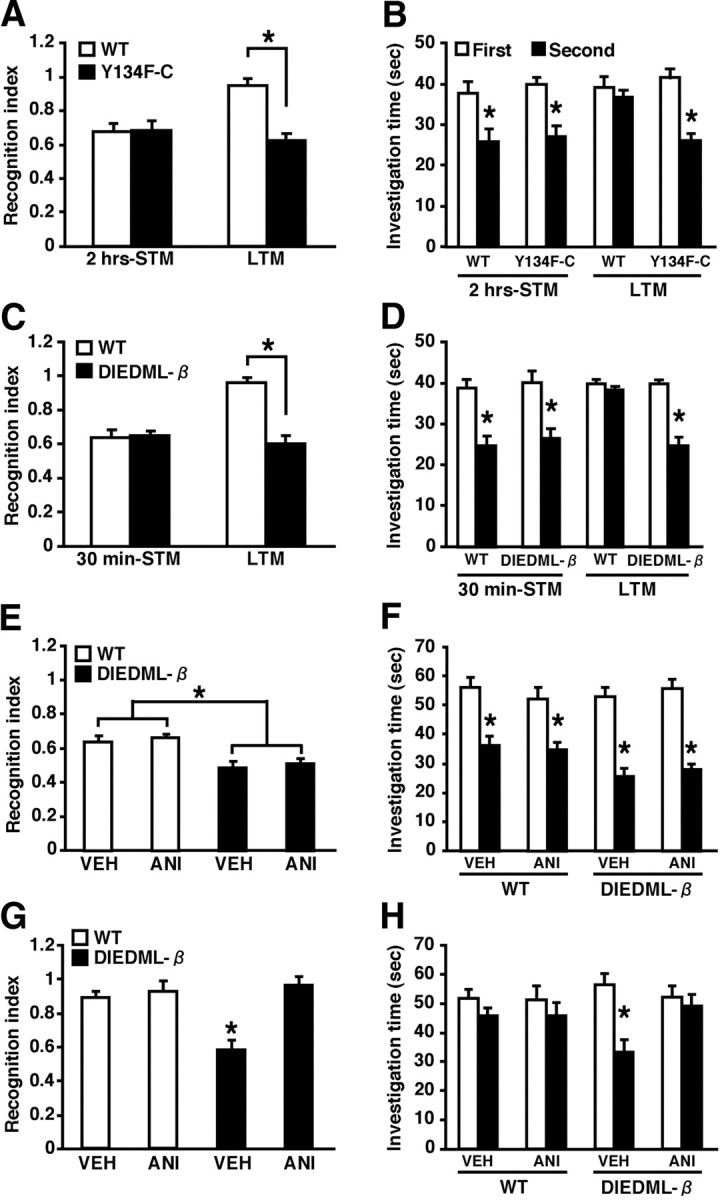Figure 6.

Dissociation of mechanisms for the enhancement of short-term and long-term social recognition memory in active CREB mice. A, B, Two-hour STM (WT, n = 8; C, n = 8) and 24 h LTM (WT, n = 8; C, n = 8) in Y134F-C and WT mice. C, D, Thirty-minute STM (WT, n = 8; β, n = 8) and 24 h LTM (WT, n = 8; β, n = 8) in DIEDML-β and WT mice. A, C, Recognition index. *p < 0.05. B, D, Investigation time. At 30 min (B) or 2 h (D) after the first exposure, WT and active CREB mutant mice showed a significant reduction in investigation time (p < 0.05). In contrast, 24 h after the first exposure (B, D), active CREB mutant but not WT mice showed a significant reduction in investigation time (WT, p > 0.05; C, p < 0.05; β, p < 0.05). These observations indicated that active CREB mice formed STM and LTM, whereas WT mice formed only STM but not LTM. *p < 0.05, compared with the first exposure. E, F, Effect of protein synthesis inhibition on 2 h STM in DIEDML-β and WT mice (WT-VEH, n = 8; WT-ANI, n = 9; β-VEH, n = 10; β-ANI, n = 9). E, Recognition index. *p < 0.05. F, Investigation time. Two hours after the first exposure, WT and DIEDML-β mice treated with ANI or VEH showed significant reductions in investigation time (p < 0.05), indicating that all groups formed STM. *p < 0.05, compared with the first exposure. G, H, Effect of protein synthesis inhibition on 24 h LTM in DIEDML-β and WT mice (WT-VEH, n = 11; WT-ANI, n = 10; β-VEH, n = 8; β-ANI, n = 8). G, Recognition index. *p < 0.05. H, Investigation time. Twenty-four hours after the first exposure, the β-VEH group showed a significant reduction in investigation time (p < 0.05), whereas the other groups of mice did not (p > 0.05), indicating that only the β-VEH group formed LTM. *p < 0.05, compared with the first exposure. Error bars represent SEM.
